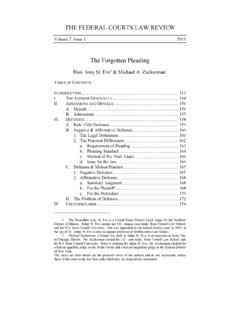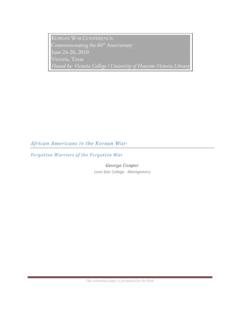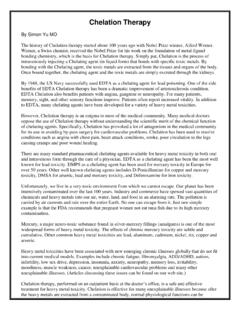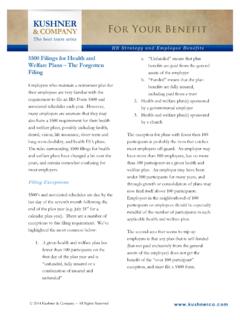Transcription of Iodine: the Forgotten Weapon Against Influenza …
1 Thyroid Science 4(9):R1-5, 2009 ReviewIodine: the Forgotten Weapon Against Influenza VirusesDavid Derry, MD, PhD332 425 Simcoe StreetVictoria BC V8V 4T3 Correspondence: Dr. David Derry August 29, 2009 Accepted: September 2, 2009 Abstract. After the 1918 Influenza Pandemic which killed an estimated 30 million people, governmentsfinanced research on the Pandemic s causes. Over 25 years, Influenza viruses were isolated and methodsfor killing them with various agents discovered. iodine was the most effective agent for killing viruses,especially Influenza viruses. Aerosol iodine was found to kill viruses in sprayed mists, and solutions ofiodine were equally effective. In 1945, Burnet and Stone found that putting iodine on mice snouts pre-vented the mice from being infected with live Influenza virus in mists.
2 They suggested that impregnatingmasks with iodine would help stop viral spread. They also recommended that medical personnel haveiodine-aerosol-treated rooms for examination and treatment of highly infected patients. Current methodsof dealing with Influenza infection are isolation, hand washing, antiviral drugs, and vaccinations. All ofthese methods can be improved by incorporating iodine into them. When impregnated with iodine , masksbecome much more effective, and hand washing is more effect when done with mild iodine techniques coupled with aerosol iodine would make them safer for patients, medical personnel,and all persons working with the public. Public health authorities could organize the distribution of iodineand at the same time educate the public in the effective use of iodine .
3 Oral iodine might also boost bodydefense mechanisms in the upper oral and respiratory mucus. Conclusion: iodine incorporated into masks,solutions, aerosols, and oral preparations could help to kill Influenza viruses and fight off an H1N1 H1N1 Influenza virus iodine aerosols immunization isolations masks preventionInfluenza Pandemic History The 1918 Influenza Pandemic killed an esti-mated 30 million people within a year. In thequarter century following the Pandemic, govern-ments financed intensive research into the Pan-demic s causes and treatments for the viruses thatcause Influenza . iodine was the superior anti-[1]septic that at low concentrations killed the air-borne viruses that cause Influenza .
4 iodine waswithout toxicity.[2-12]The 1918 Pandemic was unusual in that it af-fected young healthy men, especially soldiers.[1]Normal flu infections are most virulent againstyoung children and older persons. H1N1 virus[14]also concentrates its lethality on young healthy per-sons between ages 5 and 18, as reported by Frieden, director of the Centers forDisease Control and Prevention. In this man-[13-14]ner, the H1N1 virus resembles the 1918 1918 virus attacked again in the fall andover two-months killed millions of people. It isanticipated that the H1N1 virus may behave simi-larly, and public health authorities and the medicalprofession are bracing for this potential and Prevention The time-tested weapons Against influenzaviruses are cleanliness, hand washing, isolation,masks, immunizations, and antiviral 1918, the last two were not available, and theother methods did little to stop viral spread.
5 Wash-ing hands in a standard 70% alcohol solution is ef-fective Against most pathogenic bacteria, but it hasno effect on viruses, especially Influenza a similar manner, masks used in 1918 show-ed barely detectable benefits in holding back in-fluenza spread as viruses readily passed throughthe gauze. Isolation is difficult to institute and en-force in cities with large numbers of infectedpatients. In sparsely-populated communities such2 Derry, D.: iodine : the Forgotten Weapon Against Influenza Viruses Thyroid Science 4(9):R1-5, 2009as Alaska, isolation was beneficial but difficult toimplement. Even in hospitals, large numbers ofpatients tend to overwhelm and compromise iso-lation techniques. [1]Vaccines and antiviral drugs have been pre-pared and are available in many Western Coun-tries.
6 These interventions are of unknown benefit,as Influenza viruses tend to mutate is the most effective broad-spectrumantiseptic with low toxicity. iodine has very high[21]germicidal activity, and no organism develops re-sistance to iodine .[12] iodine has been used in various forms as anantiseptic for the skin, wounds, and mucous sur-faces of the body. It has also been used to sterilizethe air and inanimate objects such as catgut andsurgical instruments. Moreover, it has been used asa prophylactic and therapeutic agent in diseasescaused by bacteria, viruses, and fungi, and to san-itize eating utensils. iodine kills bacteria, virus-[7,12]es, fungi, protozoa, and even spores of bacteria andfungi, including anthrax spores.
7 iodine was usedsuccessfully Against Influenza , herpes, small pox,and chicken pox viruses.[7]When iodine was suspended in a solution, viralinactivation occurred at dilutions of 1/1,000, inactivated many viruses within 30 se-conds or less. Watery solutions such as Lu-[7,8,12]gol s are the superior germicides.[12]New Findings Leading to Effective Therapy with IodineIn 1945, a breakthrough occurred when and Sir McFarland Burnet (who later wenton to win a Nobel Prize for his Clonal SelectionTheory) exposed mice to lethal effects of influenzaviral mists. The lethal disease was prevented byputting iodine solution on mice snouts just prior toplacing them in chambers containing and Stone wrote, As a protection fordoctors, nurses and others dealing with highly in-fectious patients (Pandemic Influenza ) it should berelatively easy to design a gauze mask partially im-pregnated with iodine which should offer a greatlyincreased degree of protection to the wearer.
8 [2,3]Burnet and Stone also suggested, it may beworth considering iodine vapor as a practicalmeans of limiting indoor infection during an in-fluenza epidemic Students in classrooms were[2,3]protected from Influenza by iodine aerosol iodine also is effective Against freshlysprayed Influenza virus.[8] iodine Body Properties and DistributionIodine has been known as a universal antisepticfor 150 years and has few side effects except inhigh doses. iodine was introduced into our dietswith iodized salt by David Marine in 1920.[21,26]This effectively eliminated goiter, cretinism, andmental retardation caused by inadequate iodine inour diet.[21,27,28]Extremely high doses of iodine can haveserious side effects, but only a small fraction ofsuch extreme doses are necessary to kill influenzaviruses.
9 iodine circulating in the blood is capturedby many tissue sites and ends up in mucus se-cretions. The tissues include thyroid and salivaryglands, nasal secretions, stomach, and lungs. Col-lectively, these tissues and mucus products containfree iodine which defends Against invasion bybacteria and viruses.[16,20]When dietary iodine is absorbed from the gutall the above sites along with urinary output com-pete for blood iodine . The most potent competitoris the thyroid glands, which uses iodine to makethyroid hormone. A constant percentage of dietaryiodine is excreted in the urine. [16]Upper Respiratory and Oral Mucus DefensesThe salivary glands, nasal mucosa, and lungsall secrete mucus which contains iodine . The[16]lungs not only secrete mucus, but Salter thoughtvolatile iodine mixes with alveolar air to enter thebronchioles.
10 If this is occurs, it would serve as[17]an additional barrier to the invading air borneviruses in a manner similar to aerosol mucosa captures iodine from bloodand secretes it into stomach cavities. Free iodine inthe stomach kills bacteria and viruses and itdeactivates biological and chemical toxins. Deadviruses are still immunologically competent andthus antibodies can be made to dead viruses.[20, 22]Overall, we see there is a complex integratedsystem for protecting humans from viral or bac-terial invasions via oral, nasal, and gastrointestinalroutes. This system depends on taking adequate[16] Derry, D.: iodine : the Forgotten Weapon Against Influenza Viruses Thyroid Science 4(9):R1-5, 2009 3iodine orally.







